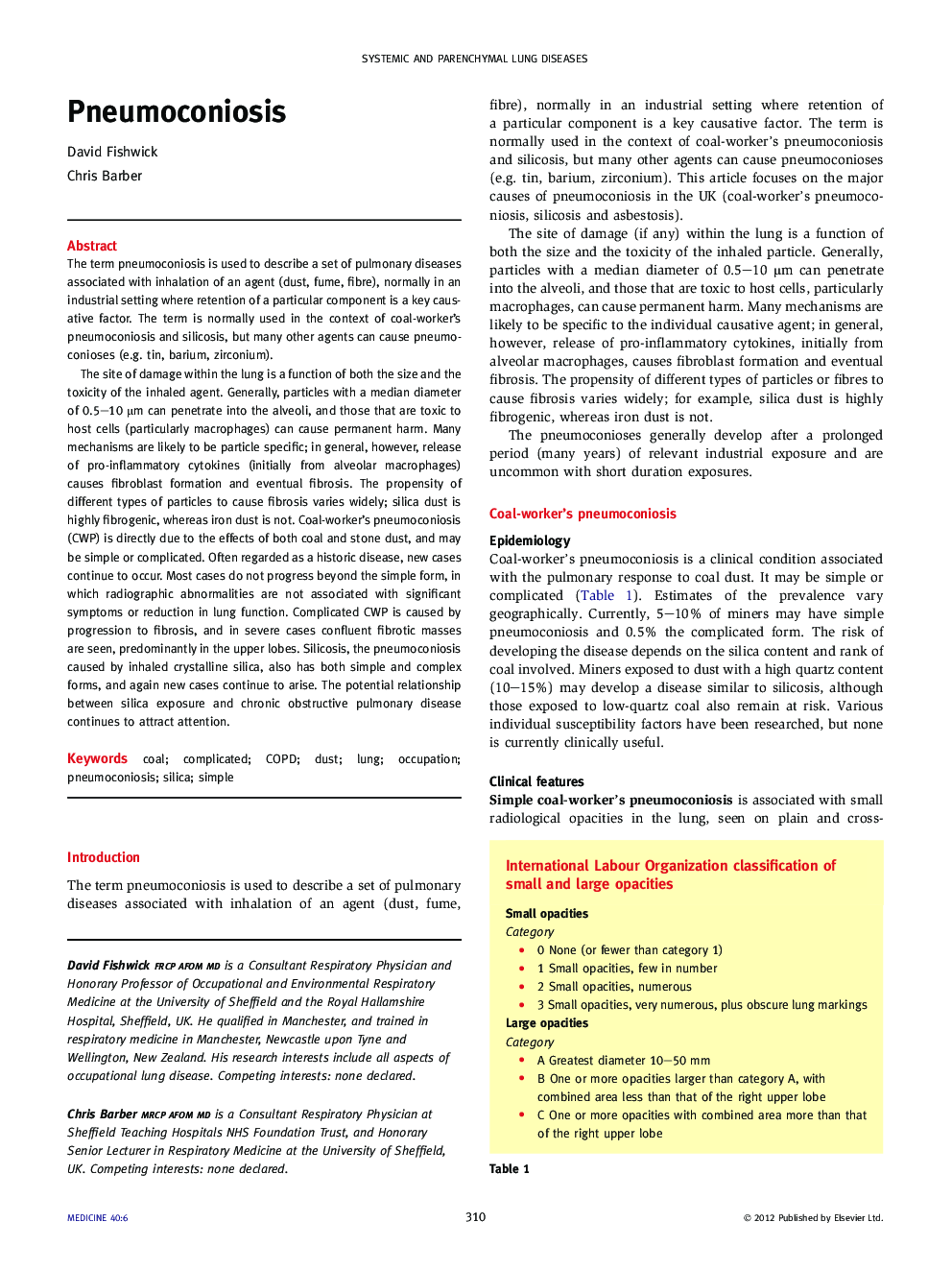| Article ID | Journal | Published Year | Pages | File Type |
|---|---|---|---|---|
| 3804867 | Medicine | 2012 | 4 Pages |
The term pneumoconiosis is used to describe a set of pulmonary diseases associated with inhalation of an agent (dust, fume, fibre), normally in an industrial setting where retention of a particular component is a key causative factor. The term is normally used in the context of coal-worker's pneumoconiosis and silicosis, but many other agents can cause pneumoconioses (e.g. tin, barium, zirconium).The site of damage within the lung is a function of both the size and the toxicity of the inhaled agent. Generally, particles with a median diameter of 0.5–10 μm can penetrate into the alveoli, and those that are toxic to host cells (particularly macrophages) can cause permanent harm. Many mechanisms are likely to be particle specific; in general, however, release of pro-inflammatory cytokines (initially from alveolar macrophages) causes fibroblast formation and eventual fibrosis. The propensity of different types of particles to cause fibrosis varies widely; silica dust is highly fibrogenic, whereas iron dust is not. Coal-worker's pneumoconiosis (CWP) is directly due to the effects of both coal and stone dust, and may be simple or complicated. Often regarded as a historic disease, new cases continue to occur. Most cases do not progress beyond the simple form, in which radiographic abnormalities are not associated with significant symptoms or reduction in lung function. Complicated CWP is caused by progression to fibrosis, and in severe cases confluent fibrotic masses are seen, predominantly in the upper lobes. Silicosis, the pneumoconiosis caused by inhaled crystalline silica, also has both simple and complex forms, and again new cases continue to arise. The potential relationship between silica exposure and chronic obstructive pulmonary disease continues to attract attention.
